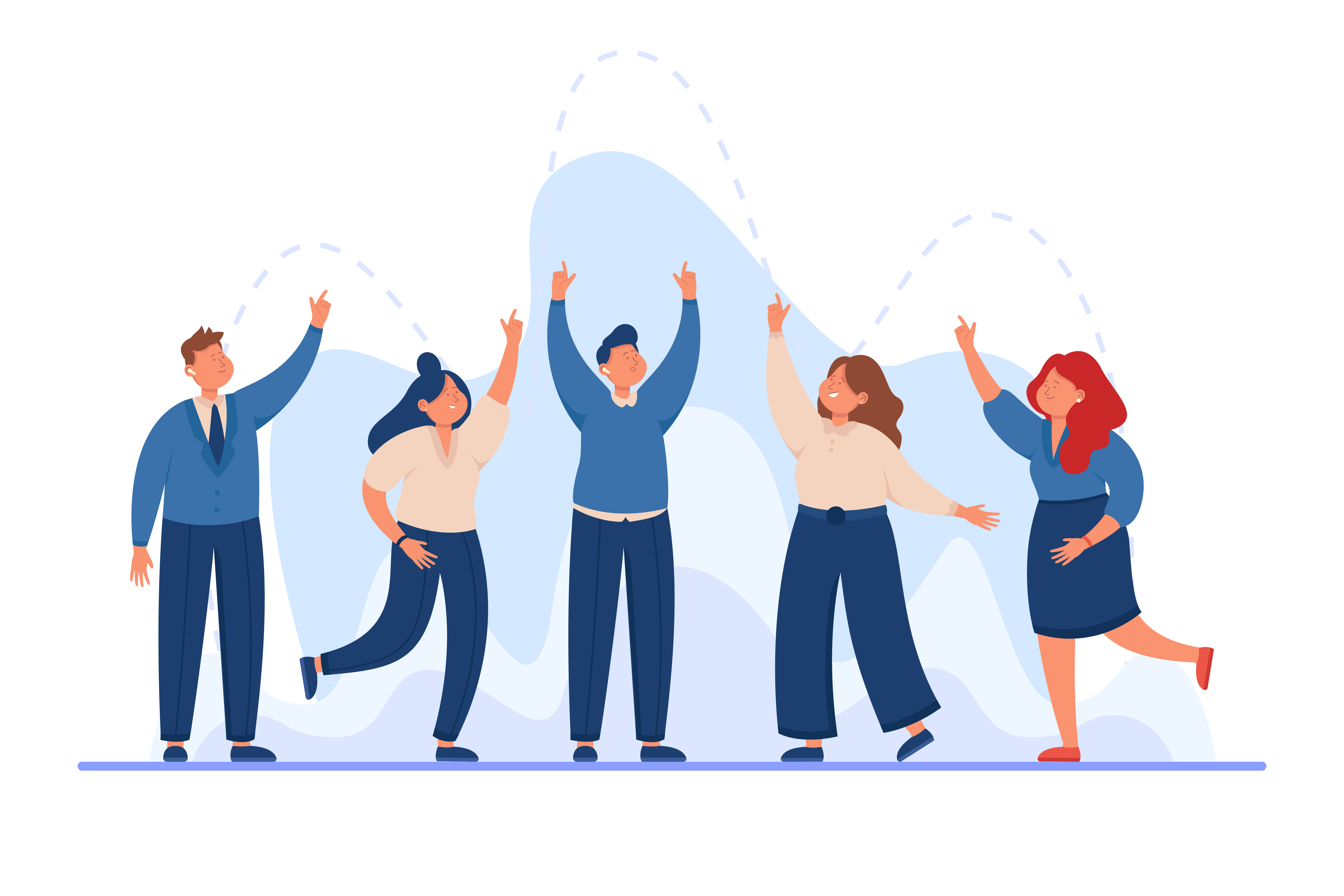Productivity and ultimately your business success depends on the motivation of your employees. To maintain this in the long term, it takes much more than a salary supplement these days. Those who manage to motivate employees benefit not only from increased performance but also from a pleasant working atmosphere and strong loyalty. Satisfied and motivated employees have no reason to change companies.
But how is it possible to motivate employees at all, which incentive systems for employees really work today and how can you design incentives for employees?
What is employee motivation anyway?
By creating positive incentives, you can motivate your employees. Increasing employee motivation serves as an instrument of employee management and development. Incentives for employees, such as non-cash bonuses, cash bonuses or further training offers as well as bonus payments, are given with the aim of influencing the actions and attitudes of your staff in such a way that they are more motivated to perform better due to satisfaction and the feeling of appreciation. Increasing staff motivation means creating a win-win situation for everyone.
Why motivate the employees?
Motivating employees has significant advantages in times of skills shortages, digitalisation and competitive markets and should be part of any appreciative corporate culture. Studies and research show that motivated employees show more commitment and thus perform better, are more creative, and are sick less often and thus absent less often. In the end, motivated employees have a positive effect on the overall success of the company.
Another important advantage of motivating employees: Employees who are motivated are usually also more satisfied and remain loyal to an employer for longer.

Increase employee motivation with incentive systems for employees
A distinction is made in employee motivation between extrinsic and intrinsic motivation.
Extrinsic motivation includes all incentives that come "from outside" and motivate employees. If the employee achieves a goal, he or she receives a reward in the form of bonus payments, a salary increase or is promoted. Avoiding punishment is also classified as extrinsic motivation.
Intrinsic motivation refers to all incentives that come from the employee himself. Things like enjoying the work or taking responsibility play a role. Motivation is generated from within because the employee feels good, finds meaning in his work and is fulfilled. Intrinsic motivation has been shown to increase long-term retention more effectively than extrinsic motivational incentives. In that case, you can motivate employees by praising them, giving positive feedback, responding to their personal interests or even giving them responsibility.

Motivating employees using Maslow's pyramid of needs
The pyramid of needs according to Abraham Maslow is an understanding model that categorises human needs and thus makes them more tangible. You can use this as a basis to plan measures for long-term employee motivation. Always remember that all people strive for fulfilment of levels. Provided one is fulfilled, it is on to achieving the next.
There are five levels:
- Level: Basic or existential needs
- Level: Security
- Level: Social needs
- Level: Recognition and esteem
- Level: Self-realisation
All the basic needs of Maslow's pyramid can be applied to the workplace, giving you practical pointers to motivate your employees.
In the end, this could look like this:
- Basic or subsistence needs: financial security, free access to water, fruit or the like, and a physical place to work.
- Security: Protection against dismissal, social security, company pension scheme, safe environment and security
- Social need: teamwork, joint projects, meetings, space for exchange, identification and affiliation
- Recognition and appreciation: praise, promotion opportunities, salary increase, personal gifts and positions
- Self-realisation: free development, acting on one's own responsibility, contributing ideas, meaningfulness of work and deep personal satisfaction
In order to motivate employees, you should analyse which level they are currently at and create incentives by means of the appropriate measures to fulfil the next level.
Implement measures and motivate employees
Below we give you some tips on how to motivate employees. Use them and get inspired for your own ideas.
Recognition and praise
Staff performance should never be taken for granted. Let your staff feel that you value them. Praise employees for particularly good performance or for their daily commitment. This can be done on the one hand in feedback talks or on the other hand in a team meeting. Constructive criticism and small, personal gifts can also help to motivate employees.
Responsibility
Give your employees responsibility and instil confidence in them. Responsibility for independent projects increases self-esteem and ensures high employee motivation. Because those who bear responsibility want to achieve the best result in the end.
The meaning of work
Communicate to your team the value and meaning of their work. Do your employees know what their role is, what they actually get up for in the morning? Motivating employees means showing them why they do what they do every day. Show what their work does at meetings, send success updates by email and integrate your staff into "the big picture".
Personal goals
With clear goals, your employees can be motivated. Set goals with each of your employees. Break them down into sub-goals and milestones. Ideally, you should link them with incentives, which can increase the effect even more.
Food, drink, sport and gifts
It doesn't always have to be a lavish paycheck to motivate employees. Often employees are more motivated if you surprise them with small things in their daily work and thus increase their well-being. Offer free coffee and fresh fruit. Provide discounts for a gym or equip their desk with modern and functional gadgets. Small gifts such as key rings or notebooks are guaranteed to bring joy and help motivate employees in the long run.
Further development
Another incentive system for staff is the training factor. Staff who are given the opportunity to further their education will be more motivated through personal growth. At the same time, you benefit from the new competences and skills of your employees.
Motivating employees is worthwhile for every company and can be easily integrated into the corporate culture. After all, praise costs nothing and you can find smart gifts at attractive prices at TROIKA.
By the way: We are always expanding our range with new products. So it's worth checking back regularly!





Comment